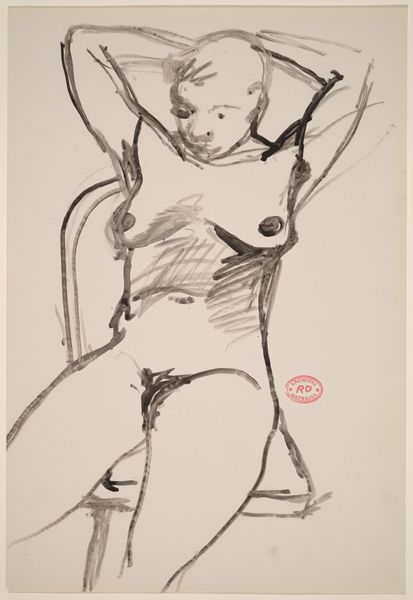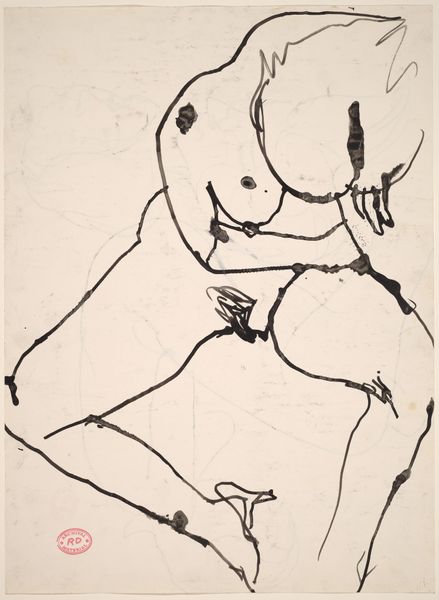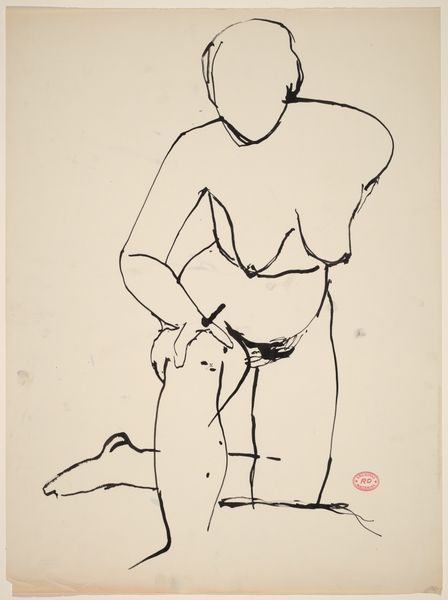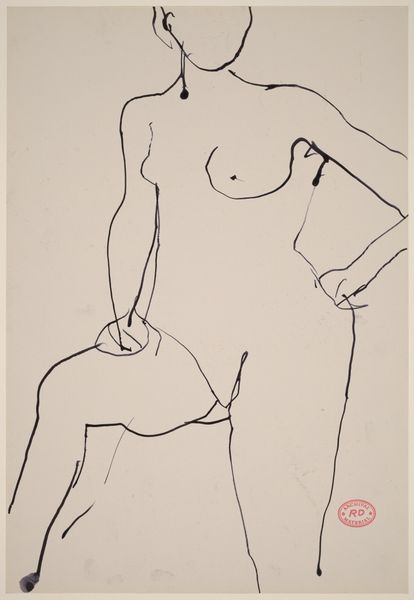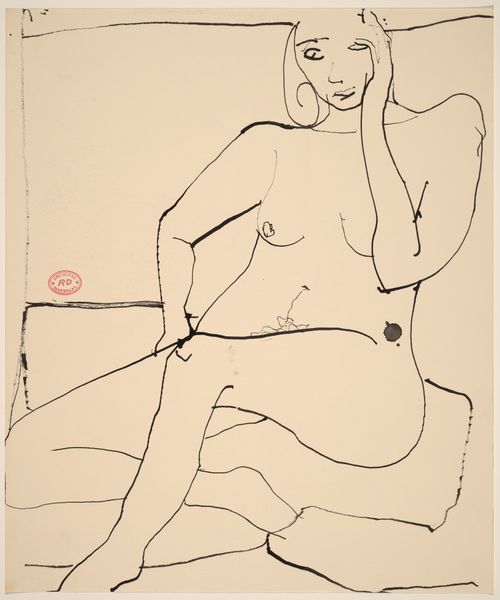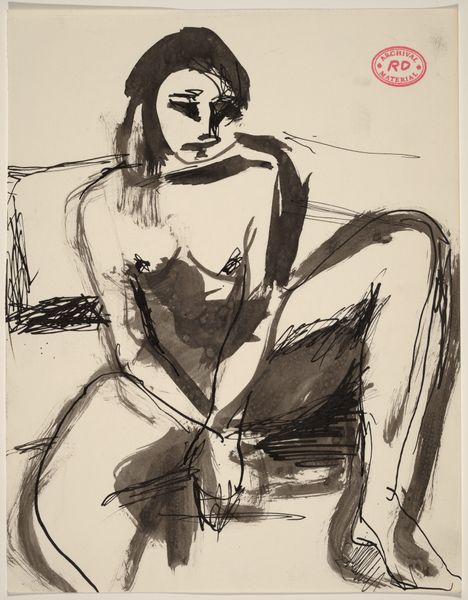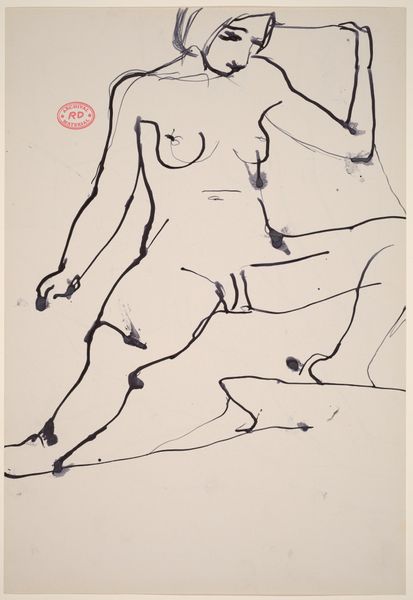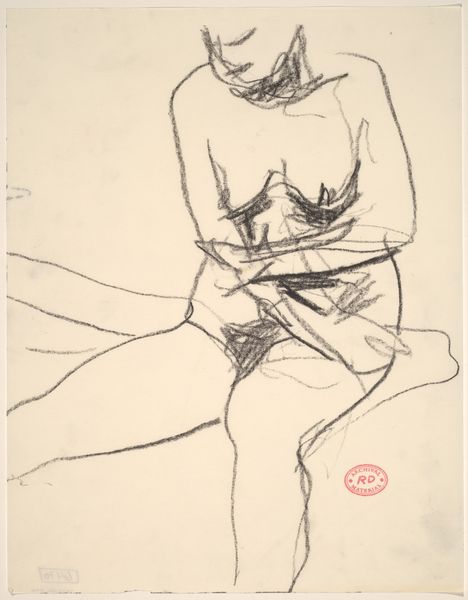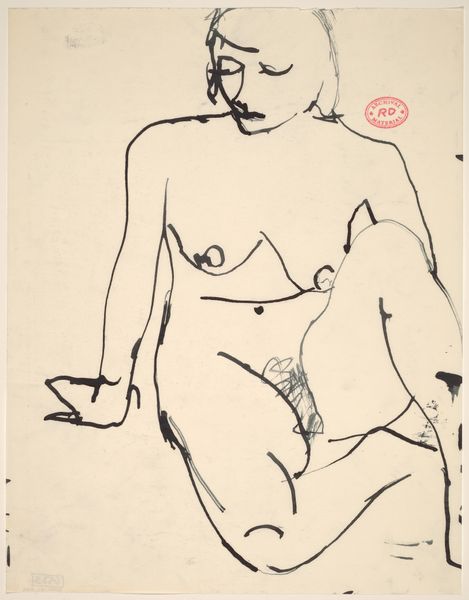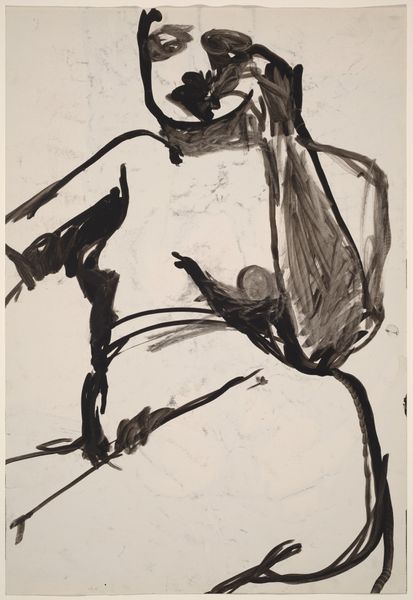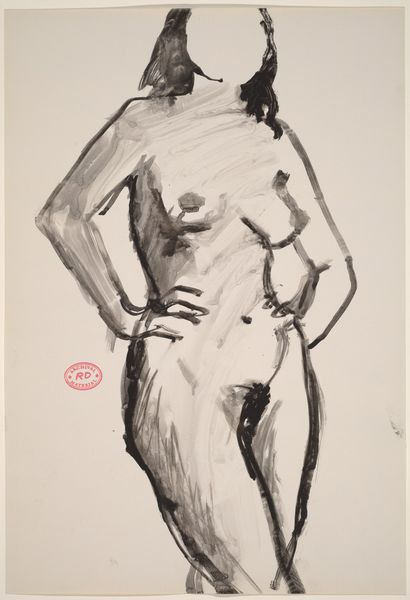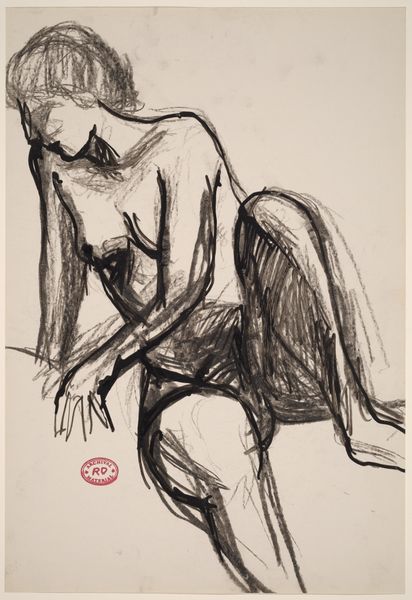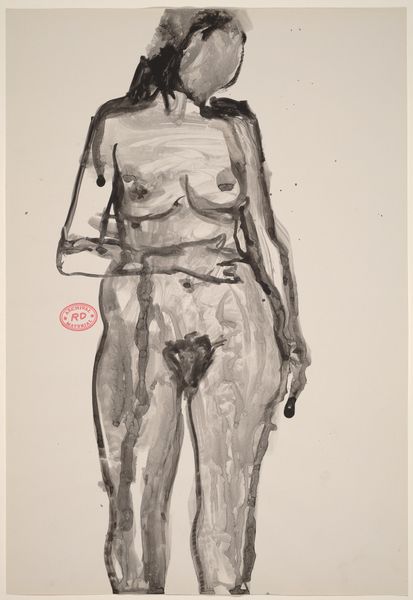
drawing, ink
#
portrait
#
drawing
#
ink drawing
#
ink
#
expressionism
#
nude
Dimensions: 38.5 x 32.8 cm
Copyright: Public domain
Curator: Ernst Ludwig Kirchner's ink drawing, "Artist Begging for Applause," created in 1909, certainly makes an immediate statement. What's your first impression? Editor: There's a raw vulnerability in the image. The woman's figure, outlined so boldly, yet somewhat unsteadily, speaks of exposure, both literally and figuratively. A critical, almost accusatory gaze confronts the viewer, begging and challenging simultaneously. Curator: Kirchner’s bold use of line and the rather textured quality of the ink is striking here. You can practically feel the pressure he exerted, the decisions he made on a material level as he crafted this piece. Look closely and you will note that he is trying to investigate the performance of ink, its limitations, its possibilities. Editor: That’s a very interesting perspective considering the wider context of Expressionism—it’s hard not to connect it with the growing unease around the commercialization of art and performance itself in that era, the artist grappling with the commodification of their very being. The work invites us to contemplate the politics inherent in displays of femininity and artistic integrity, the complex power dynamics between artist and audience. Curator: Yes, I can see how it reflects on this, but do we focus too much on the individual "suffering artist" when considering the conditions of production and dissemination. Take, for example, the question of print runs. How many copies of this image did Kirchner anticipate printing? Do we focus too much on one person instead of thinking of the system? Editor: I see your point about the risks of essentializing narratives. But in viewing the image from a socio-political vantage point, it's vital to remember these systems affect particular individuals more profoundly. Perhaps that is why his print elicits empathy by drawing attention to the female form's unique position in such a cultural theater? It underscores, on the one hand, this pervasive hunger for recognition, and also perhaps this growing sentiment toward the treatment of performers. Curator: A valid, essential concern that prompts reflection on labor, not only as we think of artistry itself but also who becomes the subject of the piece and, even, who can view the piece, whose "applause" is sought. Editor: Ultimately, the work acts as a historical document that connects early-20th-century artistic anxieties with recurring themes about labor and image that continue to influence us today. It really encourages deep thought regarding societal values.
Comments
No comments
Be the first to comment and join the conversation on the ultimate creative platform.
